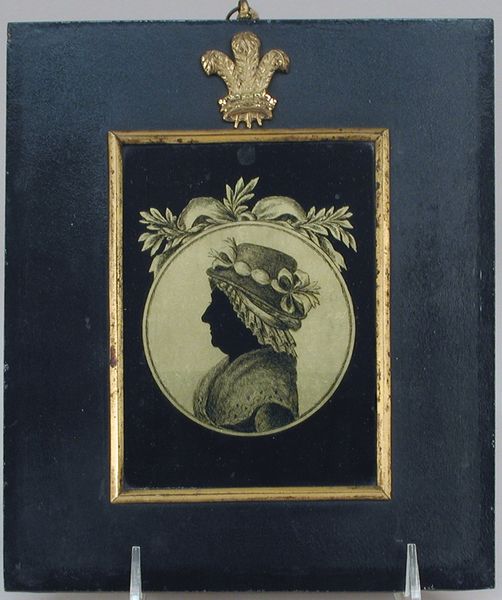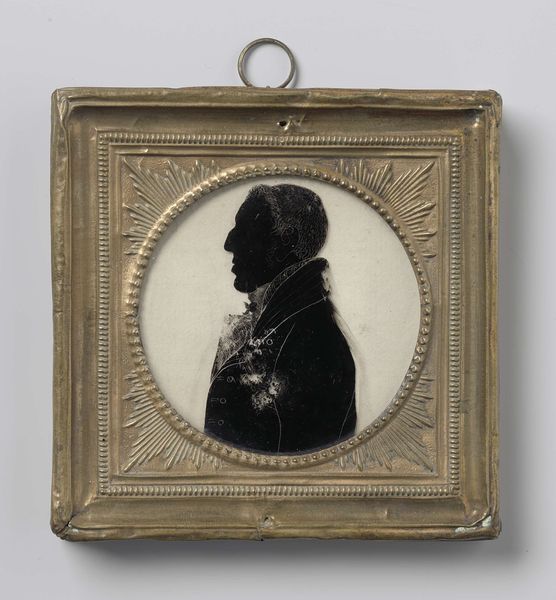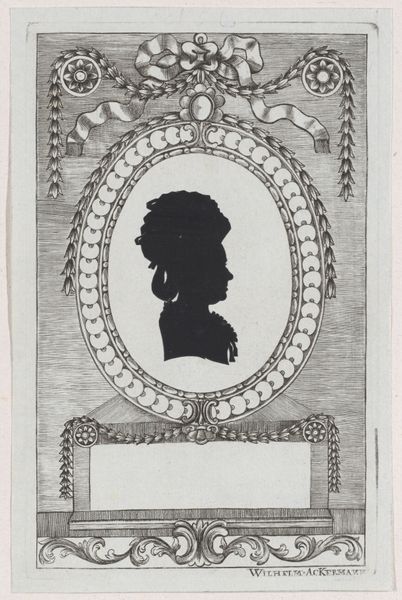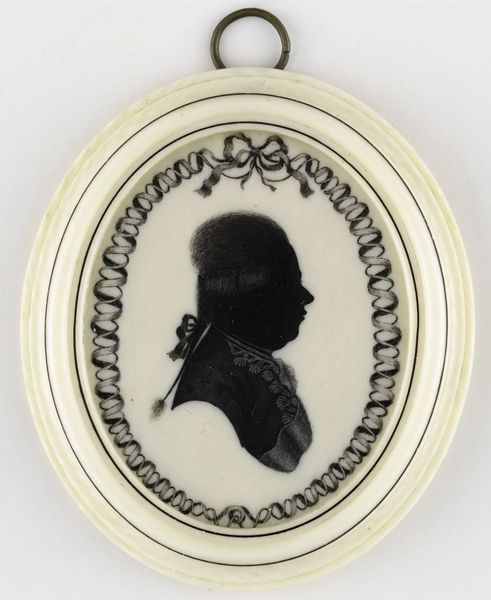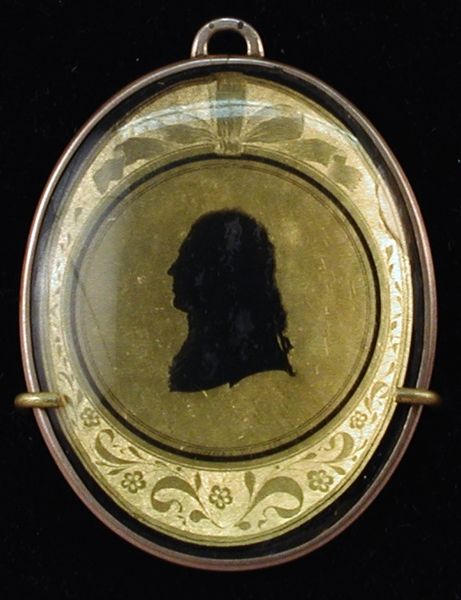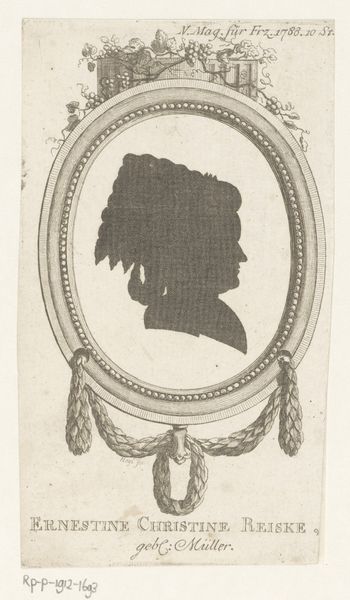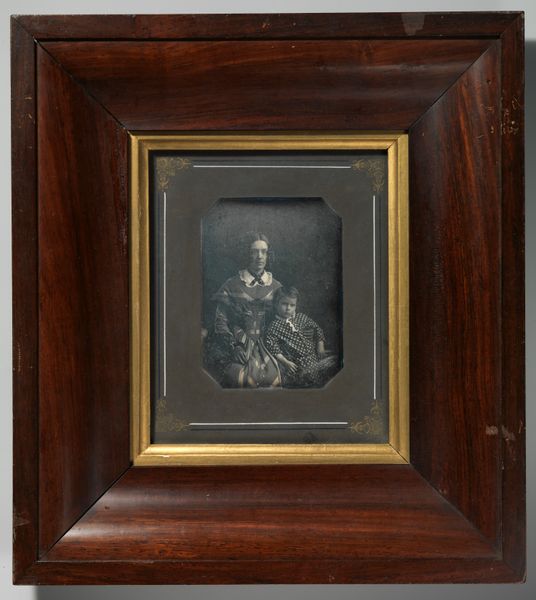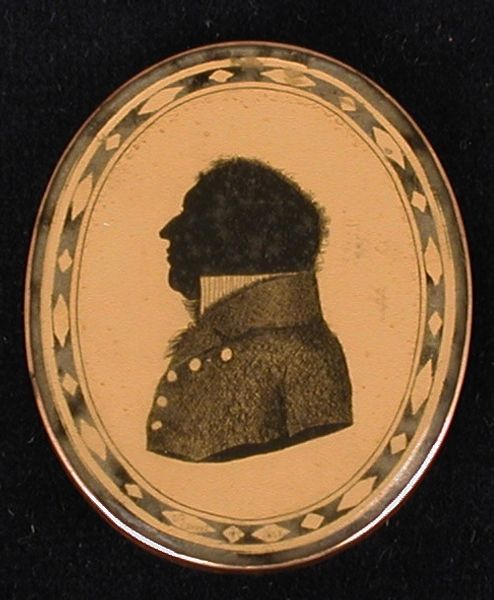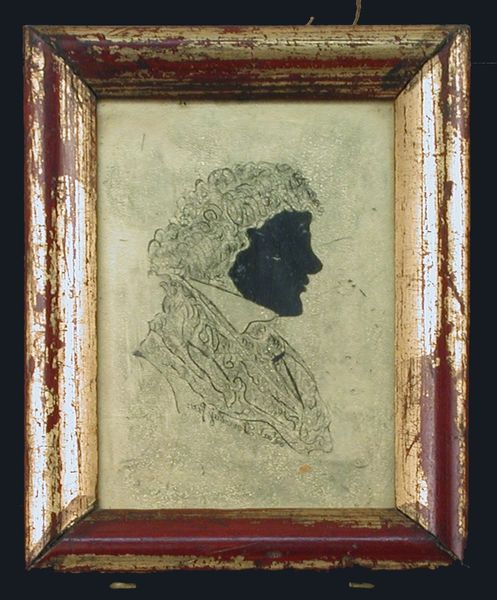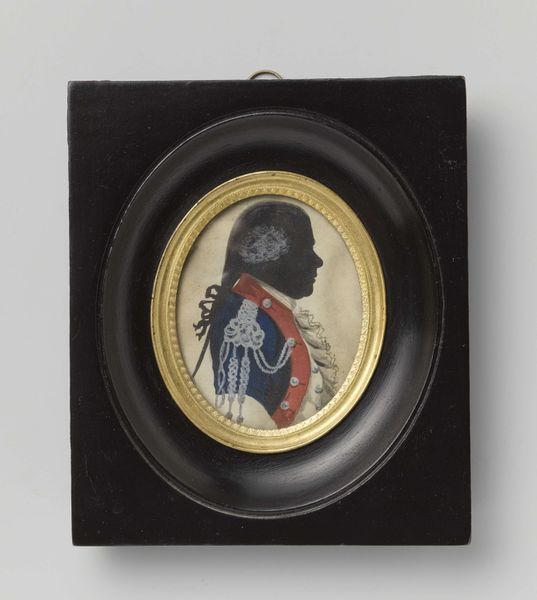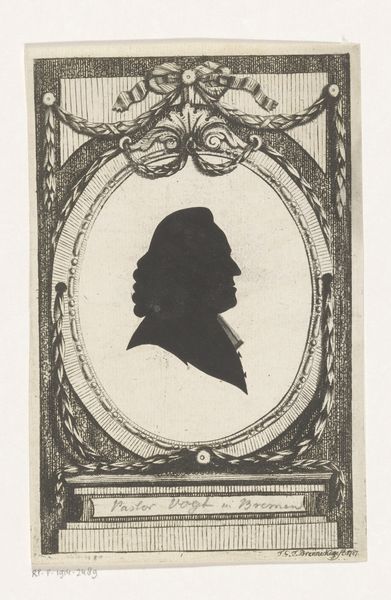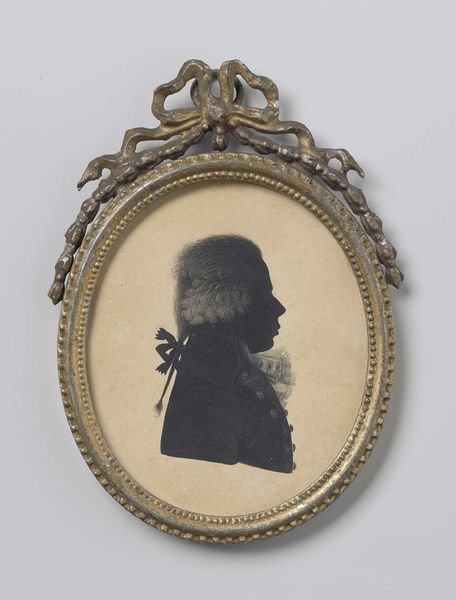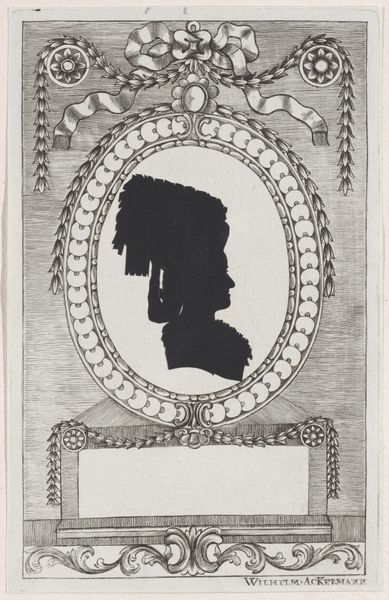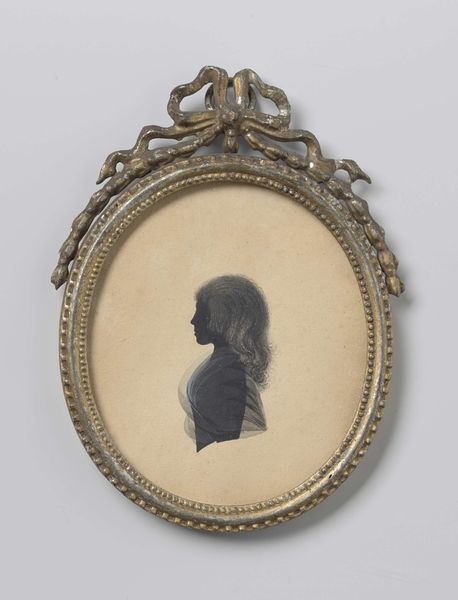
drawing, paper, glass, sculpture
#
portrait
#
drawing
#
neoclacissism
#
sculpture
#
paper
#
glass
#
framed image
#
sculpture
#
men
#
profile
Dimensions: 4 1/2 × 3 1/2 in. (11.4 × 8.9 cm)
Copyright: Public Domain
Curator: Here we have "Portrait of a Man," a drawing made around 1795. It’s currently held at the Metropolitan Museum of Art. What's catching your eye about this, as you look at it? Editor: Well, initially, the stark contrast. It's like a shadow caught in a gilded cage, all formality and hidden depths. Very compelling. Curator: Yes, that high contrast silhouette was a very popular format. This is neoclassical portraiture, after all, so the goal was to idealize the subject. Notice how the laurel wreath framing the profile nods to classical antiquity and suggests importance, status, maybe even military prowess given his uniform. Editor: Military, definitely! He's got that proud, upturned nose that probably scared someone on a battlefield once or twice. It's interesting how much they can convey with just a simple outline. There is very little information, but I fill it with information myself about him. Does that make sense? Curator: Absolutely, and that interplay is entirely intentional. Silhouette portraits were far cheaper and quicker to produce than painted portraits. This made them accessible to a wider audience and democratized image production. So you get that striking style coupled with wider circulation in society. It’s about representation and accessibility. Editor: Hmmm…the shadow as a symbol. That simplicity and mystery combined with accessibility must have made these little portraits so desirable. There’s a feeling like anyone could become history. That little embellishment up top on the black frame almost has a royal air. I bet that added to the feeling that everyone could ascend. Curator: That frame certainly elevates the portrait, doesn't it? It reinforces this sense of the individual's importance. It would be interesting to research where it originally hung and how it circulated among this man's peers. Editor: Now that’s the historical analysis at work! My mind mostly runs toward that anonymous shadow. Looking at it, I find myself projecting all sorts of narratives. That man could be a poet, a soldier, a dreamer lost in the march of time. Curator: Exactly! And the portrait serves both as a record of a life and an invitation to imagine it anew, filtered through history, art, and our own perspectives. It shows art’s role as an active record, in shaping history, shaping memory, shaping imagination. Editor: Indeed. From stark silhouettes to endless stories.
Comments
No comments
Be the first to comment and join the conversation on the ultimate creative platform.
